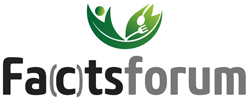In vivo and in vitro effects of boron and boronated compounds.
Benderdour M1, Bui-Van T, Dicko A, Belleville F.
J Trace Elem Med Biol. 1998 Mar;12(1):2-7.
Boronated compounds have been shown to be potent anti-osteoporotic, anti-inflammatory, hypolipemic, anti-coagulant and anti-neoplastic agents both in vitro and in vivo in animals.
http://www.ncbi.nlm.nih.gov/pubmed/9638606
ARTHRITIS: THE MAINSTAY OF THE "HEALTH INDUSTRY"
THE DISEASE THAT "HEALTH" AUTHORITIES DON'T WANT CURED
by Rex Newnham, Ph.D., D.O., N.D.
http://www.whale.to/w/boron.html
Essentiality of Boron for Healthy Bones and Joints
Rex E. Newnham Rex Newnham and Associates, North Yorkshire, England
http://www.ncbi.nlm.nih.gov/pmc/articles/PMC1566627/pdf/envhper00403-0084.pdf
Agricultural Practices Affect Arthritis
Nutrition and Health January 1991 7: 89-100,
http://nah.sagepub.com/content/7/2/89.full.pdf
Supplement to The Art of Getting Well
Boron and Arthritis
Professor Bentwich, Robert Bingham, M.D., Dr. Mark Hegsted,
Dr. Herbert, Hunt, Professor Jeffries, Professor Jack Loneragan,
Loughman, Professor O.O. Myers, Ploquin, Dr. Hans Neiper,
Rex
E. Newnham, Ph.D., D.O., N.D., Nielsen, Gus J. Prosch, Jr, M.D.,
Dr. Paul Pybus, Professor Verbeek, Dr. Bridges-Webb, Jeff E.
Young, M.S., Zittle/Responsible editor/writer Anthony di Fabio.
Copyright 1994
All rights reserved by the The Roger Wyburn-Mason and Jack M.Blount
Foundation for Eradication of Rheumatoid Disease
AKA The Arthritis Trust of America ®
7376 Walker Road, Fairview, Tn 37062
http://www.arthritistrust.org/Articles/Boron and Arthritis.pdf
Magnes Res 2000 Mar;13(1):19-27
Magnesium deficiency in the rat: effects of fructose, boron and copper.
Kenney MA, McCoy JH
School of Human Environmental Sciences, University of Arkansas, Fayetteville 72701, USA. kenney@comp.uark.edu
The following study, although enigmatic, appears to show that boron may affect thyroid function and the levels of T4 and T3.
Vopr Kurortol Fizioter Lech Fiz Kult 1989 May-Jun;(3):28-31
[
Morphofunctional characteristics of the thyroid and a change in the level of thyroid hormones in the blood from the internal use of boron-containing waters].
[Article in Russian]
Korolev IuN, Panova LN, Bobkova AS, Korovkina EG
It has been established that intake of waters identical by Br concentrations (250 mg/l) but different by an ion-salt base leads to various structural changes of the thyroid at the tissue, cellular and subcellular levels. Artificial Br-containing water induces more pronounced shifts correlating with T3 and T4, blood concentrations. The ion-salt base was found essential in the mechanism of action of Br-containing water.
The following study shows that boron supplementation in males can increase estradiol (estrogen) and testosterone levels. This suggests that boron is involved in the conversion of progesterone into estradiol and testosterone. Since we have seen that hypers often have high progesterone levels and low estradiol levels (testosterone levels not known), this study offers more evidence that a boron deficiency may be involved in hyperthyroidism.
Biol Trace Elem Res 1997 Mar;56(3):273-86
The effect of boron supplementation on its urinary excretion and selected cardiovascular risk factors in healthy male subjects.
Naghii MR, Samman S
Department of Biochemistry, University of Sydney, NSW, Australia.
The following study indicates that boron is involved in cognitive performance. Because of the observed decreases in mental functioning in thyroid disease it's important to consider all nutrients which may be involved in brain function. Also note that boron may be involved in membrane function. Since boron is a light element and many of the lighter elements are involved in the passage of the heavier elements through the cell walls, boron's function may be involved in this process. We have seen that other light elements like lithium perform functions regulating the passage of heavier elements like copper into the cells.
Environ Health Perspect 1994 Nov;102 Suppl 7:65-72
Dietary boron, brain function, and cognitive performance.
Penland JG
United States Department of Agriculture, Agricultural Research Service, Grand Forks, North Dakota 58202-9034.
The following study is a gold mine. The study shows that boron supplementation increases estradiol and testosterone and for reasons given above I believe that these results suggest that boron might be deficient in hyperthyroidism. Additionally boron was shown to decrease plasma concentrations of calcium. High calcium levels may be associated with increased heart rate. Since calcium and magnesium act as antagonists, this reduction of calcium by boron may allow magnesium levels to rise and thereby lower the heart rate and muscle cramps.
Additionally boron was shown to increase plasma copper, copper-zinc superoxide dismutase (SOD is one of the body's most important free radical scavengers), and ceruloplasmin (a protein which transports copper). Here is direct evidence that boron is essential for copper metabolism and therefore quite probably for the correction of hyperthyroidism and possibly hypothyroidism.
Furthermore, the study offers a possible explanation for why estrogen may slow thyroid function: it increases plasma copper, SOD, and ceruloplasmin. Boron also increased these variables whether estrogen was administered or not.
This is excellent documentation to support my observations that boron was important in my recovery from hyperT.
Environ Health Perspect 1994 Nov;102 Suppl 7:59-63
Biochemical and physiologic consequences of boron deprivation in humans.
Nielsen FH
United States Department of Agriculture, Agricultural Research Service, Grand Forks, North Dakota 58202-9034.
The following study indicates that boron and molybdenum affect estrogen metabolism and concludes that "It is possible that high dietary intakes of boron or molybdenum could regulate the rate of catabolism, or even the metabolic fate of the major estrogens."
J Inorg Biochem 1992 May 15;46(3):153-60 t
Borate and molybdate inhibition of catechol estrogen and pyrocatechol methylation by catechol-O-methyltransferase.
Beattie JH, Weersink E
Division of Biochemical Sciences, Rowett Research Institute, Bucksburn, Aberdeen, U.K.
The possibility that boron and molybdenum anions can influence sex steroid metabolism by forming complexes with catechol estrogens has been studied in vitro. The formation of 2-methoxyestrone (2-OHE1 2-Me) from 2-hydroxyestrone (2-OHE1) by catechol-O-methyltransferase (COMT) was followed by measuring the transfer of the radiolabeled methyl group from S-adenosylmethionine. In the presence of both sodium tetraborate and sodium molybdate using a phosphate buffer medium, the formation of 2-OHE1 2-Me decreased as the anion:2-OHE1 molar ratio was increased. However, the reverse effect was observed when using a tris buffer medium and further investigation showed that phosphate and sulphate also enhanced COMT activity in a tris buffer medium. Boric acid affinity medium, used as a substitute for borate salt, also showed a negative relationship with enzyme activity in a phosphate buffer medium, and inhibition of methylation was more marked than with the free anion. Erythrocytes contain appreciable amounts of COMT, which is mostly responsible for the rapid O-methylation of catechol estrogens in blood. The methylation of a simple catechol compound, 1,2-dihydroxybenzene (pyrocatechol) was therefore studied using rat red blood cell lysates. Methylation was inhibited in a concentration-related manner by borate, as found in the studies of 2-OHE1. It is possible that high dietary intakes of boron or molybdenum could regulate the rate of catabolism, or even the metabolic fate of the major estrogens.
This is the original USDA study which showed that boron supplementation increases estrogen and testosterone in postmenopausal women. The study also showed that boron "markedly reduced the urinary excretion of calcium and magnesium," interacts with magnesium metabolism, and the boron effects were not negated by a high intake of aluminum (1000 mg per day). It seems as though boron conserves magnesium and calcium, prevents the bone demineralization, and protects against osteoporosis.
FASEB J 1987 Nov;1(5):394-7
Effect of dietary boron on mineral, estrogen, and testosterone metabolism in postmenopausal women.
Nielsen FH, Hunt CD, Mullen LM, Hunt JR
United States Department of Agriculture, Grand Forks Human Nutrition Research Center, North Dakota 58202.
Biol Trace Elem Res 1998 Winter;66(1-3):319-30
The justification for providing dietary guidance for the nutritional intake of boron.
Nielsen FH
United States Department of Agriculture, Agricultural Research Service, Grand Forks Human Nutrition Research Center, ND 58202-9034, USA.
Biol Trace Elem Res 1988 Sep-Dec;17:91-107
Magnesium and methionine deprivation affect the response of rats to boron deprivation.
Nielsen FH, Shuler TR, Zimmerman TJ, Uthus EO
US Department of Agriculture, Grand Forks Human Nutrition Research Center, ND 58202.
http://www.ithyroid.com/boron.htm
J Trace Elem Med Biol. 2011 Jan;25(1):54-8. doi: 10.1016/j.jtemb.2010.10.001. Epub 2010 Dec 3.
Comparative effects of daily and weekly boron supplementation on plasma steroid hormones and proinflammatory cytokines.
Naghii MR1, Mofid M, Asgari AR, Hedayati M, Daneshpour MS.
After one week (in samples taken at 8.00 A.M, only), the mean plasma free testosterone increased and the mean plasma estradiol decreased significantly. Dihydrotestosterone, cortisol and vitamin D was elevated. Also, concentrations of all three inflammatory biomarkers decreased after supplementation. Of note, despite decreased proinflammatory cytokines, based on recent clinical data, this must be the first human study report to show an increase level of free testosterone after boron consumption.
http://www.ncbi.nlm.nih.gov/pubmed/21129941
Life Extension Magazine August 2006
All About Supplements
Boron
Without boron, the absorption of calcium can be limited and often underutilized.1 Researchers have concluded that boron is an essential factor in facilitating the bone-building effects of key nutrients such as calcium, magnesium, and vitamin D. Numerous studies demonstrate boron is critical to maintaining and improving one’s bone health.1 Healthy bones, however, are just the beginning of the boron story.
http://www.lef.org/magazine/2006/8/aas/Page-01
http://www.earthclinic.com/remedies/borax.html
Oxford Journals
Medicine & Health
Journal of Antimicrobial Chemotherapy
Volume 63, Issue 2
Pp. 325-336.
Antifungal mechanisms supporting boric acid therapy of Candida vaginitis
Francesco De Seta1,2, Martin Schmidt3, Bao Vu4, Michael Essmann2 and Bryan Larsen2,*
1Burlo Garofolo, University of Trieste, Trieste, Italy
2Department of University Research, Des Moines University, Des Moines, IA, USA
3Department of Biochemistry and Nutrition, Des Moines University, Des Moines, IA, USA
4Department of Pharmaceutical Science, Drake University, Des Moines, IA, USA
*Corresponding author. Tel: +1-515-271-1559; Fax: +1-515-271-1644; E-mail: bryan.larsen@dmu.edu
Received June 13, 2008.
Revision requested August 4, 2008.
Revision received September 24, 2008.
Accepted October 28, 2008.
http://jac.oxfordjournals.org/content/63/2/325.long
J Womens Health (Larchmt). 2011 Aug;20(8):1245-55. doi: 10.1089/jwh.2010.2708. Epub 2011 Jul 20.
Boric acid for recurrent vulvovaginal candidiasis: the clinical evidence.
Iavazzo C1, Gkegkes ID, Zarkada IM, Falagas ME.
http://www.ncbi.nlm.nih.gov/pubmed/21774671
Cytotechnology. 2010 Apr; 62(2): 157–165.
Published online 2010 Apr 30. doi: 10.1007/s10616-010-9272-2
PMCID: PMC2873987
Boric acid: a potential chemoprotective agent against aflatoxin b1 toxicity in human blood
Hasan Turkezcorresponding author and Fatime Geyikoglu
http://www.ncbi.nlm.nih.gov/pmc/articles/PMC2873987/






